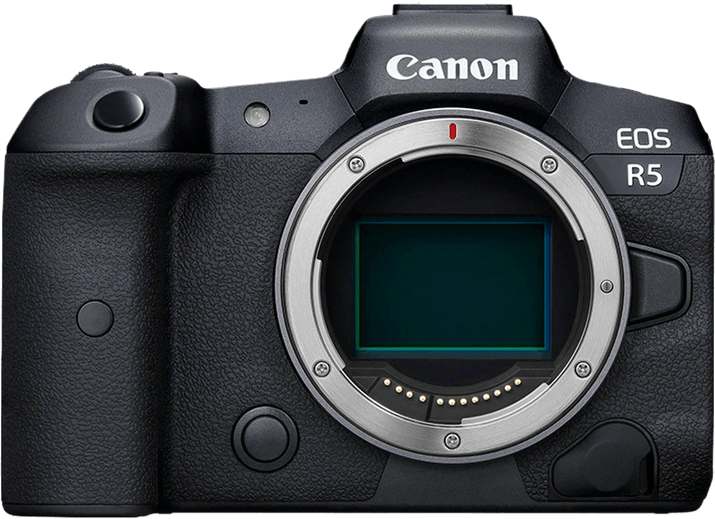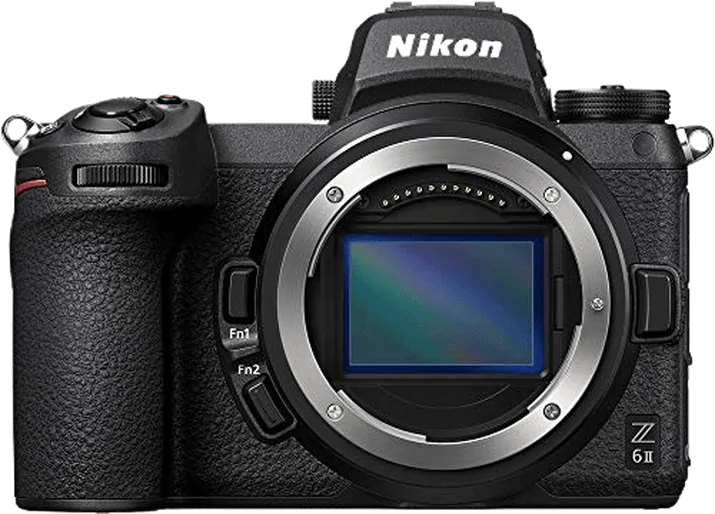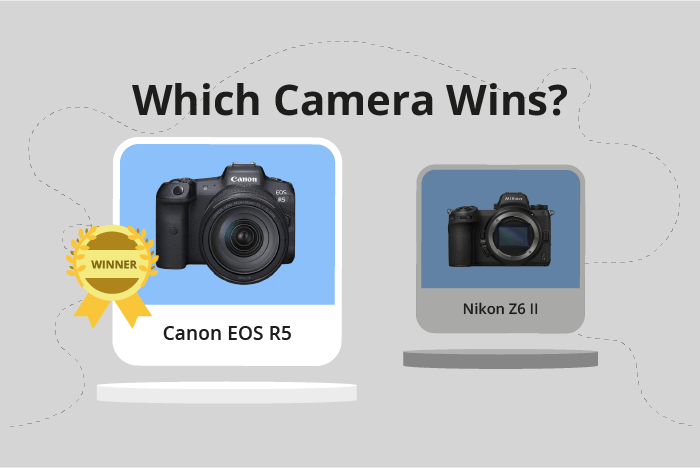Canon EOS R5 vs Nikon Z6 II Comparison
Canon EOS R5

Nikon Z6 II

The Canon EOS R5 outperforms the Nikon Z6 II with a score of 86/100 compared to 83/100. Both cameras share similarities as mirrorless models released in 2020, with the R5 announced on July 30th and the Z6 II on October 14th. They have comparable sizes, with the R5 measuring 138 x 98 x 88mm and weighing 680g, while the Z6 II measures 134 x 101 x 70mm and weighs 705g.
The R5 has a higher score due to its superior performance and features, but it comes at a higher launch price of $4499 compared to the Z6 II’s $1995. Despite the price difference, the R5 offers exceptional value with its advanced capabilities.
On the other hand, the Nikon Z6 II holds its own with a solid score and a more affordable price point. This makes it a competitive option for those seeking a reliable mirrorless camera without breaking the bank.
Ultimately, the Canon EOS R5’s higher score reflects its superior performance, while the Nikon Z6 II offers a budget-friendly alternative with commendable features.
Canon EOS R5 vs Nikon Z6 II Overview and Optics
The Canon EOS R5 outperforms the Nikon Z6 II in optics, scoring 88/100 compared to the Nikon’s 83/100. Both cameras share some specifications, such as a CMOS sensor, full-frame sensor size, and image stabilization. They also have their respective lens mounts, with the Canon having the Canon RF mount and the Nikon using the Nikon Z mount.
The Canon EOS R5 boasts superior specs in several categories. With 45 megapixels, it provides a higher resolution than the Nikon Z6 II’s 24.5 megapixels. This results in more detailed images and greater flexibility for cropping and printing. Additionally, the R5 has a faster shooting speed of 20 frames per second, compared to the Z6 II’s 14 frames per second, allowing for better capture of fast-moving subjects. The R5’s Digic X processor and a slightly higher DXOMARK sensor score of 95 further contribute to its superior performance.
The Nikon Z6 II, on the other hand, has its advantages as well. Its dual Expeed 6 processors provide efficient processing and potentially better noise reduction. Furthermore, the lower megapixel count can result in larger pixels, which can improve low-light performance and dynamic range. However, the difference in sensor scores between the two cameras is minimal, with the Z6 II scoring 94 on the DXOMARK test.
Taking these factors into consideration, the Canon EOS R5 emerges as the better choice in terms of optics. Its higher resolution, faster shooting speed, and slightly better sensor performance make it a more versatile and capable camera. While the Nikon Z6 II has its merits, it falls short in comparison to the Canon R5’s superior optical capabilities.
Canon EOS R5 vs Nikon Z6 II Video Performance
The Canon EOS R5 outperforms the Nikon Z6 II in video capabilities with a score of 100/100 compared to the Nikon’s 91/100. Both cameras share some common specifications, such as a maximum video frame rate of 120fps and built-in time-lapse functionality. However, the Canon EOS R5 offers superior video quality and resolution.
The most significant advantage of the Canon EOS R5 is its 8K maximum video resolution, with dimensions of 8192 x 4320 pixels. This high resolution allows for more detailed and sharper video footage, providing a better overall video experience. In contrast, the Nikon Z6 II has a maximum video resolution of 4K, with dimensions of 3840 x 2160 pixels. Although 4K is still considered high-quality, it does not match the impressive 8K resolution offered by the Canon EOS R5.
Despite its lower video score, the Nikon Z6 II does have some advantages. Its 4K resolution is still considered high-quality and sufficient for most users, and it may provide faster processing and smaller file sizes compared to the 8K resolution of the Canon EOS R5. Additionally, both cameras offer the same maximum video frame rate and time-lapse functionality, ensuring that users can capture smooth, high-quality footage with either camera.
Comparing the video capabilities of the Canon EOS R5 and Nikon Z6 II, it is clear that the Canon EOS R5 offers superior video quality and resolution with its 8K capability. However, the Nikon Z6 II remains a solid choice for those who find 4K resolution sufficient and prioritize processing speed and smaller file sizes.
Canon EOS R5 vs Nikon Z6 II Features and Benefits
The Canon EOS R5 and Nikon Z6 II are tied in terms of their feature scores, both earning an impressive 87 out of 100. When looking at their shared specifications, both cameras possess a 3.2-inch screen with a resolution of 2,100,000 dots, touchscreen capabilities, WiFi, and Bluetooth. Despite lacking GPS, the two cameras offer a range of features that appeal to photographers and videographers alike.
The Canon EOS R5 stands out for its flip screen, which the Nikon Z6 II lacks. This feature allows for more versatility when composing shots, especially in situations where the photographer needs to hold the camera at an awkward angle or capture self-portraits. By offering a flip screen, the EOS R5 provides an advantage in terms of usability and creative freedom.
On the other hand, the Nikon Z6 II does not have any distinct advantages over the Canon EOS R5 in terms of features. However, this does not necessarily mean that the Z6 II is an inferior camera overall. Other factors, such as sensor performance, autofocus capabilities, and lens selection, could still make it a compelling choice for certain users.
While both cameras boast impressive feature sets, the Canon EOS R5 offers slightly more flexibility due to its flip screen. The Nikon Z6 II matches the R5 in most other aspects, but it does not surpass it in any specific area. Ultimately, the choice between these two cameras will come down to personal preferences and priorities, as well as other factors beyond their feature scores.
Canon EOS R5 vs Nikon Z6 II Storage and Battery
The Nikon Z6 II surpasses the Canon EOS R5 in storage and battery with a score of 71/100, while the Canon EOS R5 scores 68/100. Both cameras possess two memory card slots, accepting SD, SDHC, and SDXC cards. The Canon EOS R5 also supports CFexpress cards, while the Nikon Z6 II is compatible with CFexpress Type B and XQD cards. Both cameras offer USB charging.
The Nikon Z6 II outshines the Canon EOS R5 with a battery life of 410 shots, compared to the R5’s 320 shots. The Nikon Z6 II uses an EN-EL15c battery, while the Canon EOS R5 utilizes an LP-E6NH battery. This difference gives the Nikon Z6 II a longer-lasting battery life.
Although the Canon EOS R5 has a slightly lower score, it still offers reliable storage options and USB charging capabilities. In this comparison, the Nikon Z6 II holds an advantage with its longer battery life, while the Canon EOS R5 remains a strong contender with its ample storage options.
Canon EOS R5 vs Nikon Z6 II – Our Verdict
Are you still undecided about which camera is right for you? Have a look at these popular comparisons that feature the Canon EOS R5 or the Nikon Z6 II:

